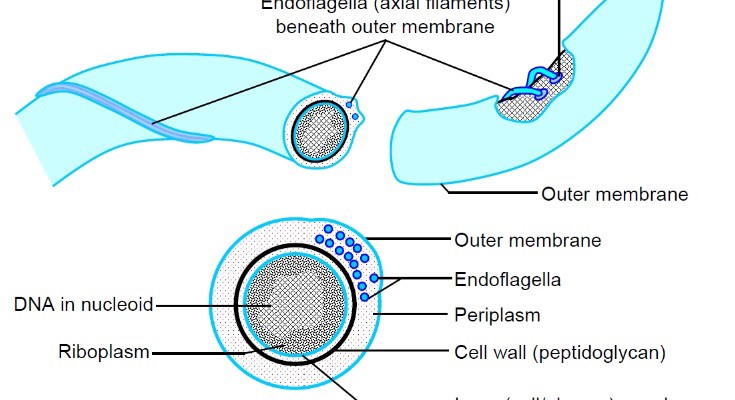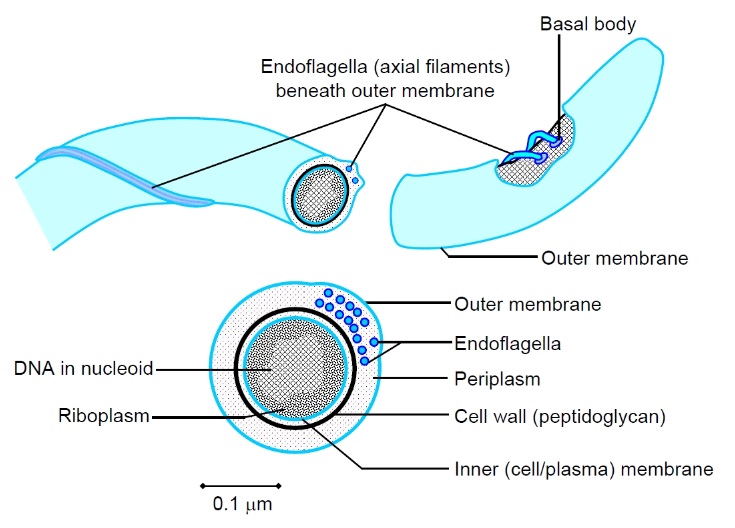Spirochetes are unique bacteria that include Borrelia species. They are likely to be some of the first bacteria inhabiting the earth roughly 4 billion years ago. Spirochetes may have evolved from the sea and adapted to a terrestrial environment to capitalize on warm blooded mammals. There are probably more than 300 species and at least 101 of them are pathogenic.
Spirochetes are only visible through an electron microscope and can range from 5-20 microns in size. They are long, thin and often spiral in shape with a motile tail known as a flagella. Their flagella allow them to engage in “swimming like” behavior for easy motility through body fluids. Spirochetes are covered with outer surface proteins that can change according to the environment they’re in (think of these as clothes), and can enter cells by piercing the phospholipid bilayer membrane around cells using tissue plasminogen activator (tPA). tPA degrades the collagen layer of joints and the blood brain barrier and spirochetes can enter the central nervous system where infection, inflammation and destruction ensue.
Spirochetes are true parasites because they are unable to manufacture their own nutrients and therefore require a host. They utilize the hosts’ nutrients including glucose, fatty acids, zinc, manganese and perhaps others unknown to date. Additionally, they are anaerobic (dislike oxygen) and thrive deep within tissues of the body and cloak themselves with the hosts’ immune system cells rendering difficulty in detection.
There are at least 3 known forms that a spirochete can take: spirochete, L-form, and cyst form which allows them to be polymorphic and adapt to ever changing environmental conditions. The spirochete form is probably the most virulent although continued research on this topic is necessary.
At the turn of the 20th century, Syphyillis (also a spirochete) was an epidemic. Now at the turn of the 21st century, Borreliosis/Lyme Disease which is also caused by a spirochete, is an epidemic. One wonders if Borreliosis/Lyme Disease has been around for decades or centuries simply undetected because scientific technologies used to detect them have only recently been developed. For more information on this topic, you can read “Biography of a Germ” by Arno Karlen, Ph.D. Dr. Karlen provides an excellent evolutionary history of spirochete bacteria.


